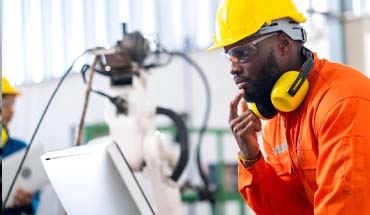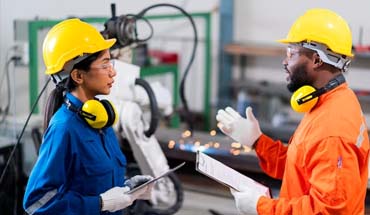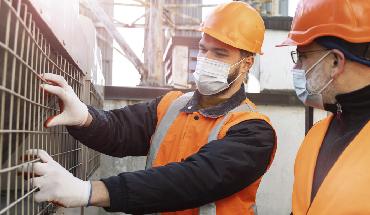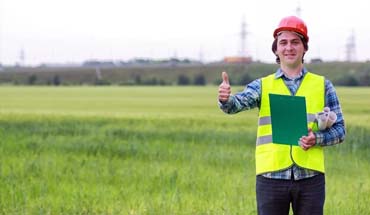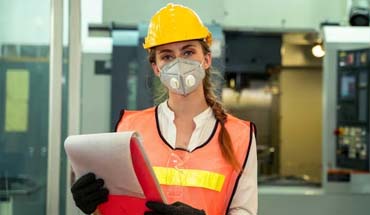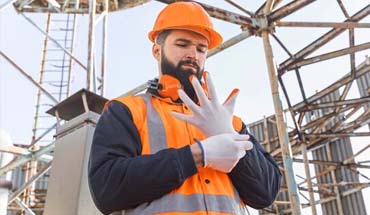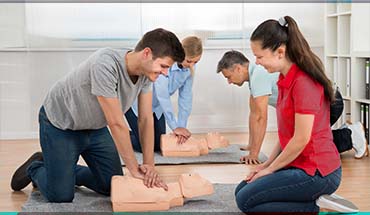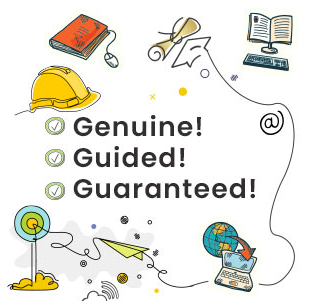“Safety Signs don’t speak, but they save lives—if people understand them.”
Safety Signboards are more than just workplace décor—they are critical communication tools that prevent accidents, guide workers, and ensure regulatory compliance. Whether you’re on a construction site, in an industrial unit, or handling electrical work, the right signs save time, reduce confusion, and protect lives.
In this blog, we explore how toolbox talks (TBTs) on safety signboards can reinforce safety culture and reduce incidents.
EVENT: When a Sign Is Ignored, Safety Fails:
During one of my early construction site audits, a young worker crossed into an active trench without a helmet or supervision. A red signboard clearly marked “Danger: Deep Excavation – PPE Mandatory.” But the worker admitted later, “I thought that was only for outsiders.”
That incident could’ve been fatal. What failed here? The message on the board wasn’t reinforced through training. No recent toolbox talk had covered signboard awareness.
ACTION: Toolbox Talks on Safety Signboards?
Toolbox Talks are brief, focused safety meetings held just before the start of a work shift, typically lasting 5 to 10 minutes. These talks play a crucial role in keeping safety top of mind and empowering workers with the knowledge they need to stay safe every day.
When it comes to safety signboards, dedicating a Toolbox Talk to this topic can make all the difference. In this session, workers learn to:
Types of safety signs and their meanings
Where are the signboards placed on your site
What each colour, shape, and symbol indicate
How to report missing or damaged signs
Types of Safety Signs- Their Meanings and Symbols
| Type | Colour & Shape | Purpose | Example | Safety Signs |
|---|---|---|---|---|
| Prohibition | Red Circle with Diagonal Cross Bar | Indicates actions that are forbidden | No Smoking, No Entry |  |
| Warning | Yellow Triangle | Alerts workers to potential hazards or dangers in the area | High Voltage, Slippery Surface |  |
| Mandatory | Blue Circle | Specifies actions or behaviours that must be followed | Wear Safety Helmet, Use Handrails |  |
| Safe Condition | Green Rectangle or Square | Provides information on safe routes, exits, or locations of safety equipment | Emergency Exit, First Aid Point |  |
| Fire Safety | Red Rectangle or Square | Indicates the location of fire safety equipment | Fire Extinguisher, Fire Hose Reel |  |
Why Workers Miss or Frequently ignore Safety Signboards
Familiarity Breeds Complacency: Workers who see the same signs daily may stop actively noticing them.
Information Overload: Busy sites with multiple signs can overwhelm workers, causing important messages to be overlooked.
Language and Symbol Misunderstanding: Multilingual teams may misinterpret or fail to understand certain signs and symbols.
Poor Maintenance or Visibility: Faded, dirty, or poorly placed signboards reduce effectiveness and are easily ignored.
Lack of Reinforcement: Without regular toolbox talks or training, workers may not appreciate the importance of signboards
TBT Delivery Tips: How to Make Toolbox Talks Effective
Delivering an effective Toolbox Talk (TBT) goes beyond reading out a checklist. It’s about engaging workers, reinforcing safety culture, and making the message stick. As a HSE expert, here are proven tips to deliver impactful safety talks:
Keep It Short
Stick to 5–10 minutes. Focus on a single, clear topic, such as signboards or PPE.
Make It Task-Relevant
Link the talk to the day’s actual work and site conditions.
Use Visuals
Show real signboards or point to on-site examples for better retention.
Engage Your Team
Ask questions, encourage input, and share short stories.
Simplify the Message
Use clear, jargon-free language—support multiple languages if needed.
Choose the Right Spot
Hold talks in quiet, visible areas to avoid distractions.
Reinforce on Site
After the TBT, check site compliance and remind workers where needed.
Document Every TBT
Record the topic, date, attendees, and facilitator for audit readiness.
Toolbox Talk Topics by Work Environment: Signboard Examples & Safety Tips
1.Construction Safety Sign Boards:& Toolbox Talk Topics
Construction workers face numerous risks daily—many of which occur in dynamic or changing conditions.Safety sign boards on construction sites must be clearly placed, frequently updated, and supported by ongoing safety talks.
Common Construction Sign Boards:
🔴 Danger: Deep Excavation
⚠️ Caution: Overhead Work
🔵 PPE Required Beyond This Point
🚧 Men at Work – Keep Clear
Relevant Toolbox Talk Topics for Construction:
Top Causes of Falls at Work – Linked to overhead work, scaffolding, and poor sign placement
Electrocution Hazards Near Temporary Wiring – Supported by “High Voltage” signs
Struck-by & Caught-in Hazards – Reinforced by caution signage in heavy equipment zones
Preventive Measures – Using correct PPE, following signage, and reporting missing signs
HSE Tip: Combine physical signboards with toolbox talks to explain why the sign is there, what hazard it relates to, and how to respond.
2. Industrial Safety Sign Boards & Toolbox Talk Topics
Industrial facilities involve high-speed operations, hazardous machinery, and the handling of chemicals. Signs help direct safe movement, highlight PPE zones, and isolate danger areas.
Common Industrial Sign Boards:
⚠️ Caution: Forklift Operating Area
🔵 Mandatory: Wear Safety Gloves
🔒 Lockout/Tagout in Progress
🧪 Chemical Storage – Authorized Personnel Only
Relevant Toolbox Talk Topics for Industry:
Machine Guarding and Operator Safety – Reinforces awareness around moving equipment.
Hand Injury Prevention – Supports glove and hand PPE signage.
Lockout/Tagout Procedures – Connects directly to LOTO signs.
Safe Navigation in Forklift Zones – Focus on pedestrian safety near forklift routes.
HSE Tip: Reinforce signage with quick visual demos during toolbox talks—e.g., show correct gloves or barriers linked to the posted signs.
3. Electrical Safety Sign Boards & Toolbox Talk Topics
Electrical work requires strict isolation, PPE, and signage clarity. Signs not only mark hazard zones but also help prevent unauthorized access.
Common Electrical Sign Boards:
⚠️ Danger – High Voltage
🔒 Do Not Operate – Locked Out
🚷 Electrical Room – Authorized Personnel Only
Relevant Toolbox Talk Topics for Electrical Work:
Arc Flash Awareness – Understand the risks and sign indications.
Reading and Understanding Electrical Signage – Ensure all team members can interpret warning signs correctly.
LOTO Protocols Before Maintenance – Reinforce lockout/tagout instructions.
PPE for Electrical Tasks – Discuss the use of insulated gloves, tools, and protective gear.
HSE Tip: Before starting any electrical work, conduct a toolbox talk that focuses entirely on the signs present and their meanings.
Conclusion:
Safety signboards and Toolbox Talks are essential components of any effective safety program, but proper risk prevention requires a comprehensive, industry-oriented safety training approach. While signboards communicate hazards visually, and Toolbox Talks reinforce awareness on the ground, ongoing, tailored safety training equips workers with the knowledge and skills to recognize, avoid, and respond to risks proactively.
Stay committed to safety every day—because it saves lives.
– Mr. Varun Vignesh, HSE Expert, Green World Group.


















